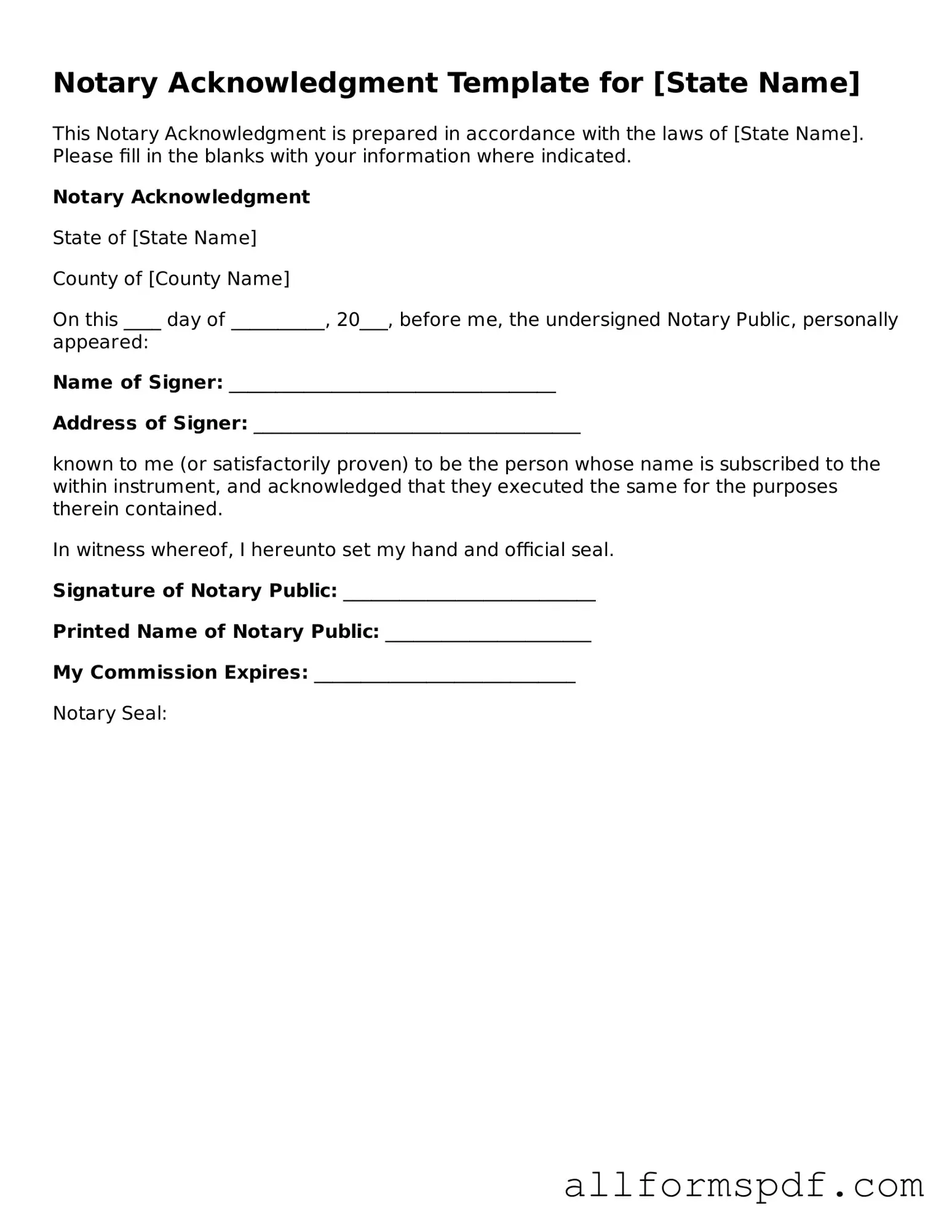When completing a Notary Acknowledgment form, individuals often make several common mistakes that can lead to delays or complications. One frequent error is failing to include the correct date. Notaries require the date of the acknowledgment to establish when the signature was verified. Omitting this detail can render the document incomplete.
Another mistake involves incorrect identification of the signer. It is essential for the notary to confirm the identity of the person signing the document. If the form does not clearly state the name of the signer as it appears on their identification, it may lead to questions about the validity of the notarization.
Many people neglect to check whether the document requires a specific type of acknowledgment. Different documents may have different requirements, and using the wrong type can invalidate the notarization. Ensuring the correct acknowledgment type is crucial for the document's acceptance.
Some individuals forget to sign the form in the presence of the notary. This is a critical step in the process. The signer must provide their signature while the notary observes to confirm that the signing is done willingly and without coercion.
Inaccurate information about the notary can also create issues. The notary’s name and commission details must be correctly filled out. If the information is incorrect or missing, it can lead to questions about the legitimacy of the notarization.
Another common oversight is not providing the appropriate venue. The venue typically includes the state and county where the notarization takes place. Failing to include this information can lead to confusion regarding the jurisdiction of the notarization.
People sometimes use outdated forms. Notary acknowledgment forms can change, and using an old version may not comply with current laws. It is essential to ensure that the latest version of the form is being used to avoid any legal complications.
Additionally, individuals may forget to include any necessary attachments or additional documentation that supports the acknowledgment. If the notary requires specific documents to verify the identity or authority of the signer, these must be included to avoid delays.
Finally, not reviewing the completed form for errors before submission can lead to significant problems. Simple typos or omissions can result in the need for re-notarization, which can be time-consuming and frustrating. Taking the time to double-check the information can save effort in the long run.
